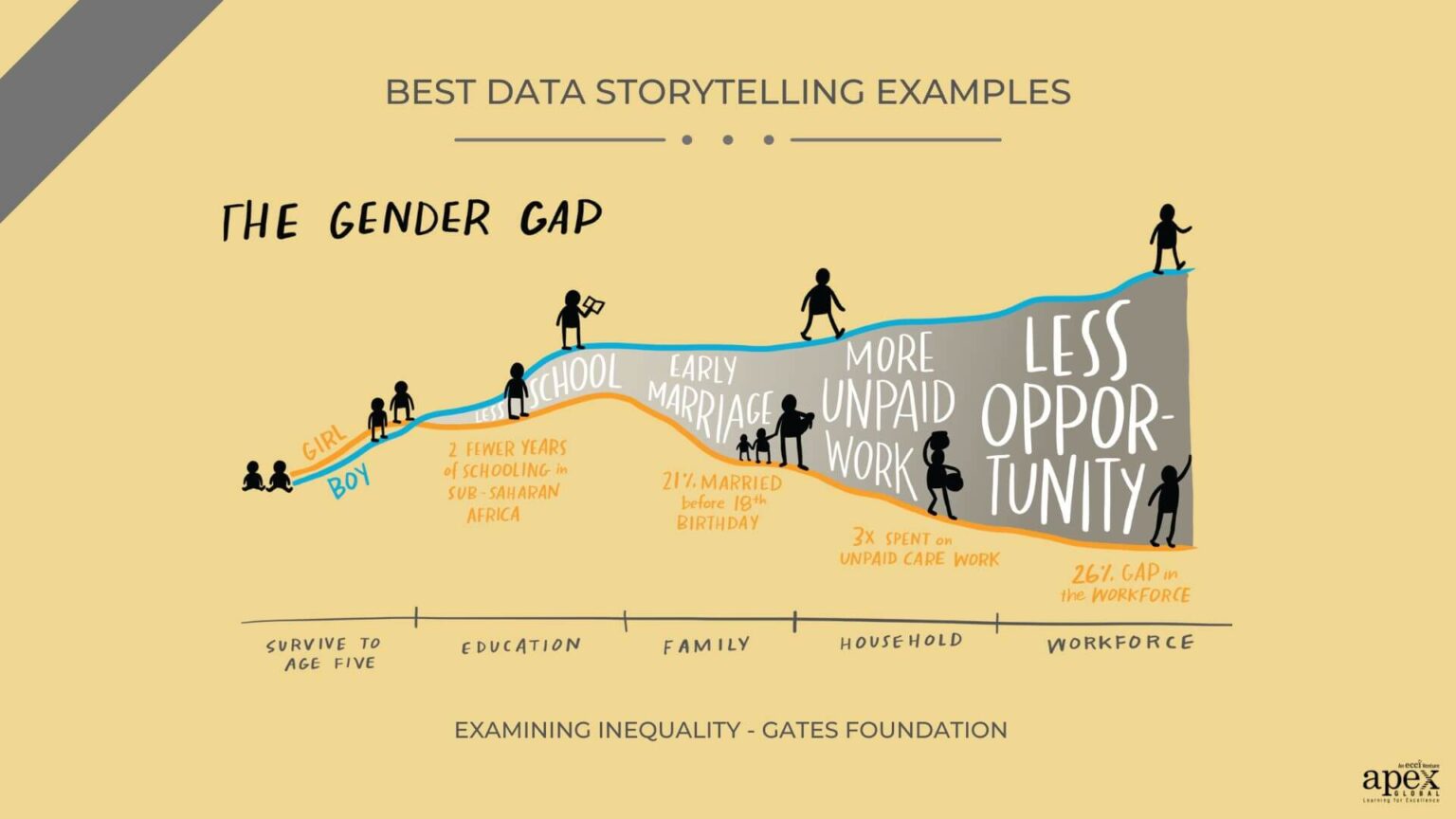Author: Diego Ibanez Rodríguez
What are data-driven narratives?
Data-driven narratives are storytelling techniques that rely on data and evidence to convey a message, tell a story, or make a persuasive argument. Unlike traditional narratives that may rely more on anecdotes or personal experiences, data-driven narratives are grounded in data.
These narratives typically follow a structured format, often beginning with a clear claim or question, supported by relevant facts, evidence, and explanations, and concluding by tying everything back to the initial claim or question. The goal of data-driven narratives is to use data to inform, persuade, or engage the audience, helping them to better understand complex issues, make informed decisions, or take action.
Data-driven narratives can take many forms, including articles, reports, presentations, infographics, data visualisations, interactive storytelling experiences... They are commonly used in fields such as journalism, marketing, academia, policy advocacy, and scientific research to communicate insights, findings, or arguments backed by empirical evidence.
Overall, data-driven narratives serve as powerful tools for transmitting information, influencing opinions, and driving action thanks to the credibility and persuasive power of data presented in a unique way.

Source: 22 inspiring data storytelling examples (apexgloballearning.com)
Why should you apply data-driven narratives to your EU projects?
In the field of EU projects, the fusion of data and storytelling has become a powerful tool for creating impactful narratives. Implementing data-driven narratives in communication and dissemination efforts within Horizon Europe projects can help increase the impact of outreach strategies. But let's take it one step at a time:
-
Identify Key Messages: Start by identifying the key messages or claims that you want to communicate to your audience. These could be insights, findings, or goals related to your project's objectives.
-
Gather Relevant Data: Collect and analyse relevant data that supports your key messages. This could include research findings, statistical data, survey results, or any other quantitative or qualitative information related to your project.
-
Structure Your Narrative: Use the Claim-Fact-Conclusion Model (C-F-O) or a similar storytelling framework to structure your narrative. Start with a clear claim or question, provide supporting facts and evidence, offer explanations where necessary, and conclude by tying everything back to your initial claim.
-
Visuals Are Key: Use data visualization techniques such as charts, graphs, maps, and infographics to present your data in a clear, compelling, and easy-to-understand manner. Make sure to bring your graphic design team on board and choose impactful visuals that are relevant to your message and audience
-
Involve Your Audience: Incorporate interactive elements, such as quizzes, polls, or interactive charts, to engage your audience and encourage active participation. This can help create a more immersive and memorable experience.
-
Remember, You Are a Storyteller!: Instead of simply presenting raw data, use storytelling techniques to contextualize the information and make it more relatable and engaging to your audience. Share real-life examples, case studies, or testimonials that illustrate your point.
-
Tailor Your Message: Customise your communication and dissemination efforts to resonate with different target audiences. Consider their interests, preferences, and level of understanding, as well as preferred channel when crafting your messages and choosing your visuals.
-
Measure and Iterate: Track the effectiveness of your narratives by monitoring engagement metrics such as views, shares, and feedback. Use this data to iterate and refine your communication strategies over time, ensuring continuous improvement.
We hope that these tips will help you get your message across in the most impactful way possible. We introduced the Claim-Fact-Conclusion (C-F-O) model as a framework to structure your narrative effectively, but remember, it's just one approach among many.
Stay open to exploring other strategies and remember that, ultimately, creativity is key—don't hesitate to experiment with different methods to find what resonates best with your audience!

